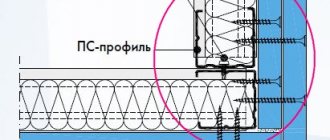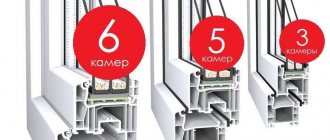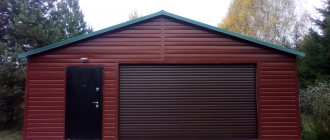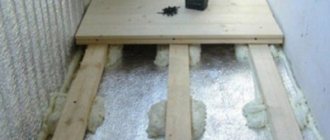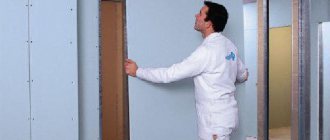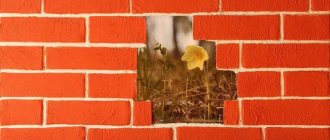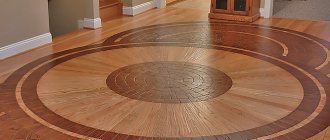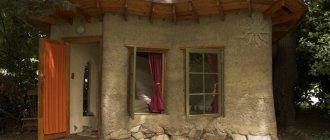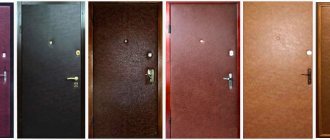Share on social media networks:
Given the current cost of utilities, many homeowners are thinking about making their home as warm as possible. The first thing you need to start with is the floors, because how warm can there be if they are cold? In order to eliminate this problem, you do not have to make them with heating or look for the cause in an unsuccessful layout. Everything could be much simpler. We will tell you about the main reasons why there are cold floors in a private house, and what to do to solve this problem without drastic solutions.
What materials are needed to insulate a cold floor in a private house?
Let's consider the most popular insulation materials:
Mineral wool. The most common material for home insulation. In addition to its low cost, it is easy to install, has good sound insulation, and low thermal conductivity. Disadvantages can scare away a potential buyer. High vapor permeability without installing waterproofing calls into question the feasibility of using mineral wool for home insulation. In addition, rodents liked it.
Ecowool
Low cost, environmentally friendly material, good thermal insulation attracts the attention of buyers. But the disadvantages are the same: moisture permeability, delicacy for rodents and flammability.
Expanded polystyrene
A good heat insulator, highly resistant, and does not allow moisture to pass through. The disadvantage is the same flammability. When burned, it emits many harmful substances, so it should not be installed in a residential area.
Plywood, sawdust, chipboard. Quite popular insulation materials. They are harmless to the premises, as they do not emit poisons when burned. There are shortcomings in thermal insulation and flammability, but otherwise they are acceptable for installation. The least popular: glass wool (inconvenient to use, harmful to the body), expanded clay (has a layer too thin for thermal insulation), polystyrene foam (high fire hazard).
When choosing insulation, each owner should focus on many indicators: what is the area of the room, are the windows insulated, the interior of the house, the material component, etc.
But most importantly, the insulation must qualitatively fulfill its characteristics declared by the manufacturer and warm the occupants of the room with warmth and comfort, give comfort and serve for a long time.
Pros and cons of different insulation materials
Each of the materials for insulating cold floors has its own advantages.
| Material | + | — |
| Mineral wool Ecowool | 1) natural material; 2) has low thermal conductivity and high noise insulation; 3) compact, available in different forms: rolls and mats; 4) light in weight; 5) easy to install; 6) affordable | 1) absorbs moisture well, and therefore requires waterproofing; 2) loved by rodents; 3) fire hazard. |
| Glass wool | Has the same advantages as mineral wool. Contains glass particles. This repels mice and other rodents. | Requires special protection of hands and other parts of the body from cuts from glass. This makes it inconvenient to work with. |
| Expanded polystyrene | 1) low thermal conductivity; 2) high sound insulation; 3) not exposed to moisture; 4) light in weight; 5) easy to transport and install; 6) has a low cost. | 1) synthetic material; 2) is easily flammable and melts, producing acrid smoke; 3) not recommended for use in residential buildings; |
| Bulk components: expanded clay, sawdust | 1) natural products; 2) excellent heat retention and sound blocking; 3) absorb and retain moisture well; 4) easy to use and transport; 5) cheap. | 1) good ventilation is required; 2) sawdust can become moldy and exposed to fungus |
When installing thermal insulation, plywood, chipboard, and OSB are used. They cover the insulation, creating a flat surface for the finishing sheet. These products serve as an additional means to maintain a comfortable temperature on the floor.
Do-it-yourself floor insulation
It is quite simple to make a wooden frame from logs (wooden slats). Their size is chosen based on the thickness of the insulation.
In addition to the heat insulator, the log will need:
- wooden frame fasteners (dowels, screws, anchors);
- construction glue, mastic;
- waterproofing layer (in the simplest version - dense polyethylene);
- construction foam (if necessary, to fill gaps in hard-to-reach places).
The bottom layer of waterproofing is laid on the concrete base, after which the logs are attached to the concrete.
The pitch between the logs may depend on the cutting of the heat insulator; the optimal distance between the bars is 60 centimeters. Joists in apartments above wet basements can be additionally treated with water-repellent impregnations.
A heat insulator is placed in the gaps, which is covered with an outer layer of polyethylene on top.
A wooden floor base (finished floor covering) is attached to the joists. Ventilation gaps are left near the walls.
Using Spray Polyurethane Foam
We’ll talk about this insulation technology separately, because it requires the participation of professionals - you can’t do it on your own, especially without the appropriate equipment. The material is laid in the form of foam having a cellular structure; the foam expands after application and forms a seamless monolithic mass. For application, a special machine is used - in it the liquid polymer is mixed with carbon dioxide at high pressure.
Stage 1. The concrete base is prepared - the old coating is dismantled, debris is removed (it can worsen the adhesion of the foam). It is characteristic that the floor does not need any leveling in this case.
Stage 2. Next, wooden logs are installed (they can be made from timber or 40 mm boards) in increments of 0.7-1 m. To fix the logs, dowels, screws or corners can be used.
PPU floor insulation
Stage 3. To improve adhesion, the concrete base is moistened. Foam is applied between the joists, but it should be taken into account that in the future it will increase in volume.
Stage 4. The foam hardens for about 24 hours, after which the floorboard or any other floor covering is laid.
Floor insulation with polyurethane foam
Video - Insulation of the concrete floor of the first floor
As you can see, there are many ways to insulate a concrete floor, and when using each, both the characteristics of the base and the microclimate in the home are taken into account. But regardless of the chosen option, we hope that the instructions given here will help you get a truly warm and comfortable home. Good luck with your work!
Insulation of the floor in an apartment on the first floor
Cold floors are typical when living on the ground floor in an old housing stock. This is due to insufficient thermal insulation of basements.
In such houses, no measures were taken to improve waterproofing, so there is dampness from below.
Floors in apartments (linoleum, laminate) are laid directly on the concrete floor, without an air gap.
Apartments on the first floor suffer the most from the cold, giving off heat to the upper rooms and not receiving heat from below. The best methods of insulation are active (using heat, electricity, water) heated floors. In many cases, it is enough to improve the floor by laying a thermal insulation layer.
Reason #2. Dampness
Dampness can create a lot of worries for every owner of a private household and apartment located on the lower floors. This is due to the fact that in the spring, damp and cold air enters the basement, after which it enters the unprotected insulation. First of all, you need to protect the insulation itself, at least with the most ordinary polyethylene board. If you experience such a phenomenon as dampness on a regular basis, you should organize ventilation of the basement.
Important! Please note that the cause of cold in the house can also be mice, which make numerous passages in the walls and floor. Therefore, if there is a risk of harmful rodents, it is better for you to install various mousetraps in advance or simply get a cat.
What to do if the apartment has a cold floor
For starters, you can complain about cold batteries. But still, the way to solve this problem was and remains - to insulate and insulate the floor. The essence of insulating materials is their thermal insulation properties, which do not allow heat to escape outside the apartment. There are several options for insulation, let's look at the popular ones.
- Bulk materials. These include expanded clay, shavings and wood concrete. They have high thermal insulation properties and are relatively inexpensive.
- Glass wool/mineral wool (mineral wool). They are also effective in insulating floors, while the material is fireproof, is not subject to fungal infection and is hygroscopic (with mandatory vapor barrier).
- Expanded polystyrene or polystyrene foam. It has its advantages: moisture-resistant, does not ignite and is not subject to deformation, has sound-insulating properties and retains heat.
It is not possible to unequivocally answer the question of which material is better, since one must proceed from financial capabilities, the type of apartment and premises in it and their performance qualities and loads. If the apartment has wooden floors, then it is better to use mineral wool as insulation. This will save money and time. The only caveat is that polymer insulation (penoplex) is not suitable for wooden floors due to the increased flammable properties of both materials. It is more effective to use expanded clay on such coatings.
More often found in urban multi-storey panel buildings are apartments with concrete floors. It itself is a cold material, so in winter it can be cold in the apartment, plus leaky joints between the slabs, as a result - the floor becomes icy. It is interesting to know that 20% of heat loss from total heat loss comes from cold floors in apartments.
In the hallway and living room, the floor can be insulated using polystyrene foam, and in the bedroom and children's room it is better to use wood bulk material.
If the floor in the apartment is not very cold, what can you do without resorting to repair work with insulation. There are alternative options:
- Lay down a rug or rug. They have a low thermal conductivity coefficient; natural wool coatings have the greatest insulation properties.
- Lay the linoleum on a felt or jute backing, or on a foam base.
If you decide to install laminate in your apartment, then before installation you need to lay a special cork material, then you won’t have to wonder why the laminate is cold in the apartment and what to do.
So, in order for the floor to have a comfortable temperature, it is not necessary to use expensive heating structures; it is enough to properly insulate it using available materials. Find out why the batteries are cold at the bottom and hot at the top.
When the problem is not in the heating radiators
It often happens that the apartment is cold, although there are no cold walls, it is not on the first or last floor, and the radiators in it are very hot. Often the problem is draft. Yes, yes, an ordinary draft on a windy day may well lower the temperature in the apartment by 5-8 degrees, which is very noticeable.
You can fight this in different ways. If you have enough money and you have long wanted to carry out a major renovation of your home, you just need to replace the windows by installing plastic ones instead of wooden ones that have dried out over many years
It is worth paying attention to the entrance doors - are there any large cracks that cause drafts?
If everything is not as good with money as we would like, you can solve the problem with much less financial costs. Stock up on tape for window insulation - it is sold in many hardware stores and cotton wool.
Now all that remains is to fill all the cracks in the windows with cotton wool, carefully compacting it with a hard and sharp object (scissors, a screwdriver or a knife are quite suitable), and then seal it with tape. That's all. On the first windy day, you will notice that the room has become much warmer and more comfortable. And this with minimal financial losses.
Installation sequence
- The infrared film is laid out in planned areas and attached to the floor using a stapler or tape along transparent edges that do not have a built-in wire.
- Recesses are made in the wall. Place the cable going from the thermostat to the thermostat.
- The places on the film in the connection area are thickened; for them it is necessary to create technological recesses artificially.
- The starting point of installation is located on the opposite side from the power connection points. Leave a free space of 20 centimeters from the walls.
- Connect the copper ends to the thermostat using the cable and contact clamps included in the kit. Secure with pliers and isolate.
- The clamp is placed between the film and the wire. The IR strips are connected near the wall. When extending them, wires of the same color are connected to each other, followed by insulation, and additional fastening with tape.
- The cable is routed inside the corrugation. It is sealed with a film, protecting it from moisture.
- After completing installation, check the functionality of the entire structure using a portable sensor.
Useful video on installing electric floors
How to make floors from wooden planks: installation options
There are several options for laying a wooden floor in an apartment with your own hands, and the choice of method is determined by the type of house. In block multi-storey residential buildings, preference is given to parquet and glued parquet boards. Owners of wooden houses can use wooden flooring, parquet boards or panel parquet. Anyone who lives in a house made of timber can install a classic solid wood floor.
The base for a wooden floor is organized, most often, in two ways - using plywood or logs
Floorboards are laid on joists, beams, plywood or concrete. The first option is used if there is a rough foundation in the form of a concrete floor. The wooden covering is secured using a joist system. It consists of long bars with a cross-section of 10x5 cm, which are attached to the base and act as a support for the floor. The logs can be installed on bricks or concrete columns. The logs are laid strictly horizontally, and the wooden boards are laid perpendicular to them.
The floor on the joists in the apartment has good load-bearing capacity. It can withstand significant loads. The design is able to hide all the imperfections and unevenness of the coating. Various engineering communications can be laid in its cavity.
The wooden floor can be laid on floor beams, which are installed on the foundation and secured. Logs are mounted on them, on top of which a wooden floor covering is placed.
Before laying a wooden floor, you should install a joist system. Its elements are located along opposite walls parallel to each other at a distance of 50-80 cm. It is necessary to stretch ropes between the logs, which will serve as a kind of guide for further laying of wooden blocks. The distance between the ropes is determined by the size of the boards. For products with a thickness of 3 cm, the step is 80 cm, less than 3 cm - 60 cm. For very thick boards (more than 4.5 cm thick), the distance is 100-150 cm.
Waterproofing material is laid on top of the joists. For this, polyethylene or penofol is used. Both options are characterized by high noise-insulating, moisture-resistant and protective (against various types of radiation) properties. Insulation should be laid on the waterproofing layer between the joists. For this you can use mineral wool, polystyrene foam, polystyrene foam, isolon or sawdust.
To adjust the height of the logs, wooden pegs or pieces of plywood are used, which are attached to the products using self-tapping screws. If the logs are laid on a concrete base, they are fixed with anchors or dowels. The fastener caps should be recessed by 2-3 mm. A wooden flooring is laid on the logs, starting from the wall, retreating a distance of 1-1.5 cm, which will subsequently be covered with a plinth. Each element is attached to the joists using self-tapping screws.
Installing additional heaters
If all measures for insulation and decoration do not bring the desired result, the “heavy artillery” comes into play, that is, a variety of additional radiators and convectors, of which there are a great variety today. If possible, the most obvious and practical solution would be to replace the old batteries with a new model that has greater heat dissipation, an attractive design and the ability to regulate temperature.
Decorative shelf-radiator, Vanixa
In addition to replacing stationary heating radiators, you can use additional options, for example, installing a flat convector. This convector is mounted on the wall and can operate continuously. Inside the convector there is a solid-cast heating element, which ensures silent operation and quick heating of the room to the desired temperature without changing air humidity.
Convectors are compact, which is very important, Galletti
One of the most progressive heating options today are infrared heaters and panels. Their fundamental difference from other models is that they ensure uniform circulation of warm air throughout the entire room, and not just near the radiator itself. This effect is achieved due to the fact that a quartz lamp in the form of a long tube is installed inside the metal case, while you can either equip the room with built-in infrared panels or connect a portable heater.
Compact infrared radiator-bedside table, Infrared
Compact and practical solution - infrared radiator on the ceiling, ATH Italia
If the lack of heat in the house is a temporary phenomenon, for example, before the start of the heating season, it is enough to acquire a compact electric fan or an oil radiator. They are mobile and relatively inexpensive, but they dry out the air, which has a negative impact on health, and consume quite a lot of electricity. It is better to have this option as an additional safety net in case of a sudden cold snap, and maintain a constant temperature in the room through other means.
Portable oil radiators in different sizes, S&P Italia
We briefly looked at different options for maintaining a comfortable temperature in the house during the winter. Of course, these decorative techniques are unlikely to replace high-quality repairs, but by combining our various tips, you will be able to make winter evenings much warmer and more comfortable for the whole family.
Insulation from the basement
The best solution is to insulate the floor slab on the basement side. In other words, it is necessary to insulate the ceiling in the basement, thus moving the cold and dew point away from the floor in the apartment.
To carry out such work, it is better to coordinate with the housing office. There are usually no problems with this. Having received such permission, you can begin thermal insulation work. The following methods are available for this:
The simplest, inexpensive, but at the same time quite effective method is to insulate with foam plastic. The foam sheets are glued to the concrete base with liquid nails. At the end of the work, all the gaps remaining between the sheets should be filled with polyurethane foam. Since the basement is often damp, and polystyrene foam tends to become saturated with moisture over time, it is necessary to waterproof it. To do this, a thick polyethylene film is glued to the insulation sheets with the same glue. The edges of such waterproofing must be overlapped by at least 10–15 cm.
You can spray polyurethane foam - one of the most reliable and durable insulation materials known today. After hardening, this material has high strength and excellent thermal insulation properties. Also, polyurethane foam does not burn and does not absorb moisture at all. The only disadvantage of this option is its rather high cost: spraying is carried out using special equipment and requires professional operator skills.
Arrangement of the ground floor
Pit waterproofing
When building a basement floor, first of all, it is necessary to correctly determine its depth. Moreover, the decisive point here is not the requirements of the project, but the proximity of groundwater. If the groundwater level is high, the ground floor should not be buried more than a meter deep.
In addition, the waterproofing of the pit plays an important role, which is performed as follows:
- When the hole is dug, the surface should be leveled and laid with a layer of clay about 10 centimeters thick. This will create a clay water seal. At the same time, the clay must be compacted well.
- Then the bottom of the pit is covered with layers of crushed stone and sand, each 15 cm thick. These layers also need to be compacted well.
- Next, you need to lay waterproofing material on the prepared bedding. It is best to use rolled material that can simply be rolled out, for example, roofing felt is a good option. The joints of the layers of roofing material must be connected using a gas burner.
Foundation pit with concrete floor
Drainage
In addition, if groundwater is close, it is imperative to drain the basement. To do this, trenches are dug a few meters from the pit, 30-50 cm deep, with a slight slope from the pit.
The work is carried out as follows:
- At the bottom of the drainage trenches it is necessary to lay a special material - geotextiles, wrapping it on the walls.
- Next, the geotextile needs to be covered with a layer of gravel about 5 centimeters thick.
- Then it is necessary to lay drainage pipes with a slope of about 0.5 cm per meter of pipe.
- Next, a thicker layer of gravel is poured - about 30 centimeters.
- To complete the work, the pipe must be laid in a well or collector.
Advice! To construct a drainage system, you can use asbestos-cement, ceramic or plastic pipes.
Pouring the floor and erecting walls
The next step is pouring the basement, which includes making the floor slab and erecting the walls.
The filling instructions are as follows:
- First of all, formwork is erected for the floor slab, which will serve as the basis for the walls of the basement. The formwork is made of permanent panels that can be fixed using self-tapping screws.
- A prerequisite for construction is the reinforcement of the basement floor, this also applies to the base slab. For reinforcement, corrugated rods with a diameter of 10 mm or more should be used. The reinforcement must be laid on special guides and tied with wire; in addition, vertical rods for the walls must be immediately installed.
- After preparing the formwork and reinforcement, the floor must be filled with concrete grade M250 or M300. The thickness of the slab must be at least 20 cm. If sewerage is installed in the basement, holes for the pipes should be thought out in advance.
- After concreting the floor, work should be stopped for about a month.
- Next, the formwork of the walls is carried out in the same way. It must be said that most often the ground floor is made from permanent formwork.
- When performing formwork, it is necessary to immediately lay windows and doors in the places designated by the project. The thickness of the walls of the basement usually ranges from 150-200 mm.
- The next step is to reinforce the walls in the longitudinal direction. The rods should be connected to the reinforcement already installed vertically. In walls 2.5-3m high you need to make at least two strapping belts.
- It is advisable to fill the walls with concrete immediately, however, it can also be done in layers. In this case, a new layer can be poured either before the concrete of the previous layer sets, or 3 days after it sets.
Wall reinforcement
Concrete gains hardness within 28 days, after which you can begin to perform the overlap.
Waterproofing the basement
Before laying the basement floor, it is necessary to perform external waterproofing. It is performed using the coating or pasting method.
A good insulation material that can be used is waterproofing. It does the job perfectly, and it's also affordable.
In the photo - external waterproofing
The work is performed in this order:
- A layer of bitumen mastic is applied to the wall.
- Then finishing is done with waterproofing.
- After this, the waterproofing layer is covered with another layer of mastic.
At the end of the work, you should backfill the base
In this case, you should pay attention that the soil does not contain large stones that can damage the waterproofing of the walls. Further work on finishing the premises is carried out after the completion of construction of the house
Internal waterproofing
How to insulate cold floors in a private house
Insulation of a wooden floor in an old house
Preliminary work
In an old house, you can insulate a cold floor without touching the walls and other parts of the building.
Remove old boards. They examine them and throw them away, rotten and rotten. Those that are not destroyed are left and used again. Checking the condition of the underground part
It is important to determine whether the subfloor boards, joists and other wooden parts are well preserved. Rotten elements are removed to be replaced with new ones. While the floors are being dismantled, you should check the ventilation vents, the condition of the subfloor and, if necessary, carry out work in this part of the house
Sometimes it is necessary to remove excess soil or, conversely, add soil. After a thorough examination, new beams are installed or old, well-preserved logs are treated with a special protective compound. Then a subfloor is laid from substandard or second-rate unplaned boards. They are also impregnated from rotting and damage by rodents. Next, insulation measures are carried out.
Main works
It is better to insulate a cold floor in a wooden house with natural materials based on cotton wool. If the house is located near fields and is attacked by field mice and domestic rodents in autumn and winter, you should prefer glass wool. You will have to experience inconvenience during installation. But this will guarantee that the floors will last for a long time.
- A cage is mounted on the rough flooring or slats are nailed in increments of 40 cm.
- Next, waterproofing is laid - plastic film. The canvases are overlapped, not stretched, and secured with tape. The edges are folded up, extending onto the walls by about 10 cm.
- Thermal insulation material is placed in the spaces between the slats. It needs to be secured. It fits well into the space allotted to it and acquires the required shape and size.
- Lay any vapor-proof material tightly on top.
- Then lay plywood, chipboard, OSB or floorboards.
- The finishing coat is placed on top.
If houses are insulated with bulk material to insulate a cold floor, waterproofing is not done. Expanded clay and wood waste absorb excess moisture well and are not subject to destruction. Sawdust compresses over time and prevents heat from escaping.
Insulation of cold concrete floors
Warm floor system
A concrete slab on the floor of a house is a good base for installing a heated floor system.
After removing the old coating, the concrete is cleaned of dust and dirt, cracks and chips are covered, and the surface is leveled. To install a water system, pipes are laid according to the diagram and connected to a heating boiler or a special device where the water will be heated. Infrared mats are laid according to the manufacturer's instructions
It is important to provide for the location of additional outlets to provide them with power. Water insulation is covered with plywood and other leveling sheets. The infrared system is covered with a thin layer of cement screed, waiting for it to harden. Next is the finishing coat.
With such a concrete floor arrangement, the house will always be warm and comfortable.
Insulating a cold floor using the traditional method
A heated floor system may seem expensive to some homeowners. To save money, you can go the route of insulation, as with a wooden base.
- Slats or boards are attached edgewise to clean concrete. It depends on the height that can be taken from the ceiling.
- Expanded clay is poured behind the waterproofing layer (sawdust is not suitable) or mineral wool is placed.
- Everything is covered with plywood sheets or boards. The latter should be connected to each other as tightly as possible and fixed with self-tapping screws. This flooring is impregnated with a special protective compound.
- Laminate, parquet, carpet and linoleum are laid on a plywood base. The boards are coated with varnish, mastic or decorative paint.
When building a new house, all insulation measures are carried out by laying the foundation and pushing out the walls. here the design features of the building should be taken into account. If the house will stand on screw piles or a columnar foundation, a thermal insulation system is required. Otherwise, there will always be a cold floor in your home.
All work on insulating the lower surface of the house can be done on your own. Knowing the basis of the technology and following the advice of experts, you can get rid of the problem with cold floors forever. To keep your feet warmer, use carpet or lay carpet runners for the finishing coating. This is especially true for bedrooms and children's rooms.
Thermal insulation option
- On the side of the upper floor, we lay thermal insulation material between the beams in one or several layers.
- Cover with waterproofing film.
- We put joists on top of the beams, arrange a rough floor, and then a finishing floor.
- On the side of the lower floor we make a vapor barrier layer, which we install on the boardwalk.
- We cover the vapor barrier layer with hemming boards or plasterboard boards.
How and with what can you insulate the floor?
Regular polystyrene foam
The brand of slabs is selected depending on the expected load on the floor. To insulate a living space, a PSB-S-35 slab is sufficient. It can have milled edges or regular ones. To overlap the slabs, preventing the formation of gaps and cracks, it is better to use regular polystyrene foam with milled edges.
The insulation is placed either in two thin layers or in one thick one.
Extruded polystyrene foam
Insulation with polystyrene foam
It has a denser structure with well-closed cells. Thanks to this, it is able to withstand heavy loads. It can be safely used not only in a living space with large furniture, but also in a garage.
Since the insulation boards are very dense, they can be laid directly on a layer of expanded clay or gravel without first making a concrete base. The low coefficient of water absorption and thermal conductivity allows the use of extruded polystyrene foam for insulating floors on the ground. In this case, the thickness of the thermal insulation layer can be only eight centimeters.
Polyurethane foam
Rigid slabs and polyurethane foam shavings can be used to insulate floors on the ground. But they need to be laid on a layer of waterproofing, since the water absorption coefficient of polyurethane foam boards ranges from 0.6 to 2.9%.
Modern materials are coated on both sides with fiberglass or an aluminum layer, which reduces vapor permeability and significantly increases the thermal insulation characteristics of the slab. The edges of polyurethane foam boards can be straight or milled. The latter are used for laying overlapping insulation.
Mineral wool
It is soft and fibrous, therefore it is often used for insulating floors above the underground or between floors. The layers that are placed under and above the mineral wool must be insulated with vapor barrier and waterproofing layers.
Expanded clay
Granular, light and porous, which is made from crushed and fired clay. In a thermal insulation structure, expanded clay performs several functions at once: leveling, heat-insulating and moisture-absorbing. If the layer is thick, additional waterproofing may not be necessary.
Expanded clay is used for insulating floors on the ground. To simplify subsequent work, it is recommended to pour a liquid cement-sand mixture over the compacted layer of expanded clay. Such fillings can be done on each expanded clay layer.
Insulation materials
The list of thermal insulation materials used in construction and repair technologies is quite large.
In terms of efficiency and ease of installation, the best heat insulators include:
- synthetic materials (foam plastic, penoplex, expanded polystyrene, teplex);
- modern wood fiber insulation;
- mineral wool;
- fiberglass;
- gypsum fiber sheets;
- liquid ceramic heat insulators.
In modern practice, bulk heat insulators are practically not used. The oldest of them, sawdust, is susceptible to rotting, mold, and is a fire hazard.
The good thermal insulation properties of expanded clay are offset by the large weight of the bulk material.
Wood-fiber sheet materials and liquid ceramic heat insulators have proven themselves to be excellent, but they are expensive.
Fiberglass materials are quite heavy and can clump together and cause allergies.
Mineral wool slabs are also quite expensive. Thermal insulation properties are ensured by the low thermal conductivity of fibers from the melt of volcanic basalts, diabase, and porphyrite.
For simple self-insulation, synthetic heat insulators are most acceptable, from a wide range of which you can make your own choice.
Glass wool and mineral wool
An example of floor insulation with mineral wool
Perhaps this is one of the most budget-friendly options for thermal insulation. In addition to its low price, cotton wool does not burn at all and has good vapor permeability, so it is excellent for insulating wooden floors. This is where the advantages of this material end. The disadvantages include the fact that cotton wool tends to accumulate moisture and this causes rotting and mold growth, the second disadvantage is that over time the wool crumbles if the thermal insulation layer under the floor is not sealed tightly enough, as a result, particles of fibers can pass through the finishing coating become airborne and cause respiratory irritation. Also, wool has very low strength, easily breaks and deforms, which makes it impossible to use it under a concrete screed.
For floor insulation on the ground, rigid mineral wool slabs are recommended
Despite its disadvantages, mineral wool is widely used as insulation, usually in wooden floors.
Most manufacturers produce glass wool and mineral wool in rolls or sheets with a thickness of 50 to 200 mm. Sheets can be laid in several layers with offset joints for better thermal insulation.
Insulation thickness
To use mineral wool on the first floors located above the ground, very good waterproofing is required. Cotton wool instantly absorbs moisture, after which it loses its thermal insulation properties. For this reason, it is better to use foam plastic for thermal insulation of the first floors. If for some reason it is still necessary to use mineral wool, then its layer should be at least 400 mm.
Multilayer laying of insulation
If there is a basement under the floor of the first floor, then a layer of mineral wool 300 mm thick is sufficient.
When insulating wooden floors between floors of a private house, the layer of wool should be at least 200 mm, and in wooden floors of apartment buildings a thickness of 100 mm is sufficient.
| Name | Advantages | Minuses | Thermal conductivity |
| Sawdust | Cheap, environmentally friendly material, lightweight | Flammability, susceptibility to rotting | 0.090-0.180 W/mK |
| Expanded clay | Eco-friendly, durable material, not subject to rotting, non-flammable | Heavy weight, fragility | 0.148 W/mK |
| Styrofoam | Does not rot, is waterproof, lightweight and easy to install | Low vapor permeability, cannot withstand high temperatures, releases toxins when melted | 0.035-0.047 W/mK |
| Mineral wool | Low thermal conductivity, easy to install, environmentally friendly, fireproof | When moistened, it shrinks and loses its insulating properties. | 0.039 W/mK |
Proper floor design
Let's divide all the questions on this topic into two large groups - for houses with floors on wooden joists and for houses with floors on reinforced concrete floors.
There is also a separate group of houses in which the floors of the first floor are located above warm basements and a group of houses that have floors on bulk soil. This group of houses is not particularly affected by the problem of cold floors, since underneath they have “heating” either from the basement or from the ground, which (if you don’t let it freeze) has a stable temperature of +4 degrees Celsius.
For reinforced concrete floors, insulation is usually done with polystyrene foam in several layers. All insulation must be carried out OUTSIDE, that is, from the outside relative to the room. This applies to both the base and the floor. The blind area is also insulated with penoplex. The insulation sheets must fit snugly against the base insulation sheets. In the case of an unheated basement, you can not insulate the entire basement wall, which goes underground, but only its above-ground part. Naturally, in this case the blind area of the house must also be insulated. The width of the insulation of the blind area depends on the depth of soil freezing in winter for a given region. The width of the insulation of the blind area should be greater than the depth of soil freezing.
Sheets of insulation are laid between the wooden joists or insulation that does not come in the sheets is filled in/blown in. To insulate floors on wooden joists, you can use basalt wool in sheets and bulk, ecowool, and polyurethane foam.
Some subtleties
There are several points to consider when planning and installing thermal insulation:
- if there is a cold basement under the first floor, an important part of the floor insulation work will be the thermal insulation of the basement walls - a large amount of heat escapes through them into the cold ground;
- all wooden floor elements must be treated with an antiseptic;
- a mandatory element for thermal insulation materials is ventilation, it prevents condensation from settling and absorbing;
- steam and waterproofing - mandatory for any type of thermal insulation material;
- if a space of several centimeters is left between the layers of the subfloor and the finished floor, it should be insulated with a fine-mesh metal mesh - this will eliminate the possibility of rodents, which are very fond of many insulating materials, from entering the underground.
If thermal insulation work is carried out correctly, the floor will last as long as the basic structural elements of the house. All materials used for thermal insulation are durable under the right operating conditions and will not require replacement for many years. But if you are not confident in your abilities, it is better to postpone repairs and turn to professionals.
Recently I became the “lucky” owner of an outbuilding that simply stands on the ground. It's cold, the floor will have to be insulated in any case. Judging by the article, I can quite cope with some materials on my own, the algorithm of actions is clear to me. Now the problem is choosing a material for thermal insulation. I'm leaning towards either mineral wool or expanded clay. Anyone who has insulated with these materials, please tell me which is better.
Expanded clay, of course, will be much cheaper, but it needs to be spread in a much thicker layer than laying mineral wool. And expanded clay will still absorb moisture, you need to lay vapor and moisture insulation - cellophane. If you are laying mineral wool, then take one with a higher density - if you use a low density, it will “sit down” over time and stop performing its function. And of course, you also need to put cellophane under it. So, if space allows, use expanded clay and lay cellophane in two layers. It will be cheaper and not inferior to mineral wool.
Leave a comment (without registration): Cancel reply
Common causes of floor cooling and how to fix them
The temperature of floors is influenced by 3 components: the object under the floor (base or room), thermal insulation and floor covering, its material and condition, and temperature is directly related to the level of humidity. Sometimes the reason may lie in one of these factors, sometimes in a combination of them.
Cold pulls from the base
The floors are located too close to the cold base - soil or concrete, and there is no insulation layer between them or its thickness is insufficient. The problem is especially acute in winter, when the ground or uninsulated foundation under the floor on the first floor freezes. The problem can be solved by raising the floors, thoroughly insulating the space between the floor and the base, as well as the foundation or basement.
It's damp under the floor
Typically, this problem occurs in the spring in private homes, when the winter-frozen underground floor begins to thaw and condensation accumulates.
A layer of waterproofing under the insulation should protect against dampness from below. Sometimes it is necessary to close the side ventilation holes - vents - in the basement so that dampness does not penetrate there from the street, and instead install a ventilation grille above the basement, in the floor. If the floors are saturated with moisture, you need to wait until they dry or use equipment such as a heat gun to speed up the process. But the coating may become deformed as a result.
Lack or insufficient floor insulation
We need better thermal insulation, made in accordance with the calculations, we also need to take care of the hydro- and vapor barrier of the insulation, and if there are mice under the floor, think about a way to deal with them and seal the passages.
There are cracks in the floor
If the floors are planks and the boards do not fit tightly together, cold will draw in from below through the cracks and heat will flow out of the house (apartment), dampness will also penetrate through them. The cracks can be sealed with putty, and to prevent new ones from forming, the loose boards can be secured with self-tapping screws. It’s even better to complement these operations by laying dry screeds made of plywood and other board or sheet materials.
Cold flooring
You can solve the problem using a heated floor system, but you need to choose it correctly for specific conditions. High-quality thermal insulation must be provided under the heated floor, otherwise it will not be the room that is heated, but the subfloor.
Heat transfer. Meaning and transmission mechanism for gender
Everyone, I think, knows that there are several mechanisms of heat transfer, or rather there are three of them: convection, infrared radiation, direct heat transfer. We only need two points - infrared radiation and heat transfer. We practically don't need convection. Even if she exists, she will be very weak. Typically, these flows find their way out through a very small gap, where mold may appear. Such floors are called whistling floors.
The first step is to reduce heat transfer by laying materials on the floor that do not conduct heat. But it’s not very easy to stop heat radiation, since the materials used for this are either good conductors of heat, or they themselves are fragile. Also, heat transfer from the floor through infrared radiation can directly exceed heat transfer. The best way to combat infrared radiation is to lay multilayer shielding on the floor. This screen will, on one side, absorb infrared energy from the side from which it appears and redirect it in both directions. There are many materials that will perfectly reflect all infrared radiation.
The floor can also be insulated with both electric heated floors and hydraulic heated floors.
Let us draw the following conclusions: Any materials that are strong in structure and do not conduct heat well are suitable for floor insulation. The floor must be insulated in several layers. Fibrous, loose and porous materials must be placed on the cold side. Because the previous layers will return more heat to the room.
What to do if there is a cold floor in a private house
- The only correct solution would be to insulate the floor.
- If the house is under construction, then you need to take care of its thermal insulation in advance. When people already live in the house, the solution would be to build up the floor or dismantle it. It all depends on your desires and financial investments.
- First of all, check the vent in the basement of the house. It should be tightly closed during the winter cold.
- Carefully examine the absence of gaps between the first crown and the base of the house.
- Take a closer look at the ceiling. According to experts, the main reason for drafts and cold floors in the house is a poorly insulated ceiling. The ceiling is insulated - the problem is solved.
- Install the “Warm Floor” system. But if the external space is not properly insulated, it will bring little benefit.
Warm floors from hot water
Installation of water heating is a step-by-step observance of the entire cycle from the beginning to the launch of the system into operation. The length of the pipe is determined by calculation, depending on the area of the room.
Advantage
- Provides uniform heating of the entire floor.
- The pipes are hidden and do not change the aesthetic perception of the interior.
- A closed cycle of hot water from central heating does not affect overall utility costs.
- Properly selected materials will not rust, which guarantees the system a long service life without leakage.
Equipment
- Metal-polymer or polymer pipes (preferably corrugated, bendable).
- Thermal insulation.
- Fastening elements.
- Manifold with fitting for connection to the battery.
- Damper tape attached to the wall along the perimeter, within the height of the structure.
- Reinforcement mesh.
- Aluminum plates.
Cork
Cork flooring – naturalness and warmth Such flooring materials allow you to create a truly original covering. The products are made from cork tree bark, so they are completely natural and environmentally friendly.
Among the advantages it should be noted:
- Comfort when walking barefoot.
- High level of sound insulation.
- The coating is non-slip and non-marking.
- The cork is well protected from moisture.
- The material is easy to care for.
- Wide range of colors and textures.
Disadvantages include low mechanical strength and short service life. In addition, cork requires subsequent finishing with varnish, so such floors cannot be called budget.
Types of insulation
Expanded polystyrene
Polystyrene sheets with grooves for insulating and leveling the floor
Expanded polystyrene, better known as polystyrene foam or its modified counterpart penoplex, has excellent thermal insulation properties, is lightweight and easy to use. There is also extruded polystyrene foam. Its difference from the usual one is that it is waterproof. If ordinary polystyrene foam can absorb a certain amount of liquid and become deformed due to temperature changes, then its more technologically advanced form is almost completely waterproof. The only disadvantage of polystyrene foam is its flammability.
Expanded clay
An example of different types of expanded clay used for insulation.
This bulk material has an attractive price and is universal. Can be used for dry floor screed or mixed with cement mortar. You can also use it to create a floating screed with your own hands.
Polystyrene concrete
Unlike expanded clay, polystyrene concrete requires a much smaller layer to create acceptable insulating properties. You can lay almost anything on it, including tiles. In addition, it has excellent sound insulation properties. You will learn more about this material from the video.
Mineral wool
Mineral wool, as well as glass wool, are some of the most popular insulation materials, which are made in the form of tiles or rolls. The advantages include thermal insulation properties, reasonable price and vapor absorption. The disadvantages are that the composition is hazardous to health. When installing it yourself, you should use respirators and avoid contact with exposed parts of the body. Therefore, mineral wool and glass wool need careful insulation to prevent dust from penetrating into the premises.
Cork
Cork is used as a backing for laminate flooring and as an insulating material.
Cork material is perhaps the most expensive on our list. It is environmentally friendly, durable and moisture resistant. It can be used even for fine finishing, because in addition to its insulating properties, it looks beautiful as a topcoat. Disadvantages include instability to cuts and other mechanical damage.
Ecowool
It is made on the basis of cellulose, which means it is environmentally friendly and not hazardous to health. It has high heat and sound insulation properties, but does not tolerate moisture. Therefore, it is used in areas where there is no risk of contact with moisture. For more information about the advantages and disadvantages of ecowool, watch the video
Penoizol
This is liquid polystyrene foam, all the advantages of which we talked about above. The advantageous difference between the liquid form of such material is its ability to penetrate into the most inconvenient places.
Warm floor
Installing an electric heated floor
The option of installing a heated floor is becoming increasingly popular. The only thing that puts me off is its cost. There are several variations:
- Water;
- Electric;
- Infrared.
Water heated floor, heats with the help of hot water communications under the subfloor. Electric underfloor heating is also installed and heats by converting electricity into heat. Infrared is the most modern, simplest option and can be installed with your own hands without the involvement of specialists. Thin underfloor heating elements are laid under the finishing flooring. Only this type of floor can be realized with your own hands, without special skills.
Planning
Antiseptic for wood
In addition to calculating the amount of basic material and the required work, questions at the beginning helped determine whether additional components would be needed:
- If mold or mildew grows, you will need to additionally purchase an antiseptic composition.
- If a shashel is discovered, the best option would be to replace the boards, since there is no one hundred percent guarantee that you will remove it, and dismantling the entire floor after finishing all the work will be very unpleasant.
- If there is creaking and subsidence, you will need to carefully evaluate the condition of the joists. They may need to be replaced. To do this you will have to purchase additional lumber. It is possible to finally determine their actual condition only after dismantling the top layer of facing material.
Waterproofing
If there is proximity to groundwater or another reason for a large accumulation of moisture, it is important to purchase waterproofing, in some cases it is better to use several layers.- For high-quality insulation, soil excavation will be required to a certain depth. Or you will simply need to replace sand or expanded clay that has already exhausted its service life (usually it ranges from 10 to 15 years). To accomplish this, you will need garbage bags.
- If you are planning to install a heated floor, then you will need to purchase components depending on which option you have chosen. For a water pipe, you will need a metal-plastic or cross-linked polyethylene pipe, manifolds, shut-off valves, as well as fastening materials. For electric, you can purchase ready-made mats.
- For the screed you will additionally need reinforcement and binding wire.
We recommend: Is it possible to disassemble laminate flooring?
To purchase the correct amount of material, you first need to calculate the area of the room. To do this, the length is multiplied by the width. The resulting number will be our basis. For insulation, the thickness of the beams can be neglected, since it still needs to be taken with a small margin. The quadrature of the hydro- and vapor barrier will also be equal to the area; an overlap will need to be added to the final value, which should be 10-15 cm.
When purchasing components for a heated floor, you can subtract the space that will be occupied by furniture.
How the cover is the warmest
Cork is the warmest. This is an expensive, elite material that can be laid in any room, except in places where there is high humidity. It is strictly forbidden to lay cork on a bare concrete floor. This coating can be produced in the form of slabs or rolls. In order to make laminate or linoleum flooring warmer, cork is also sometimes placed underneath it. It provides excellent thermal insulation and protects against extraneous noise.
Cork does not react to temperature changes and can withstand severe loads. It is not static and does not accumulate dust and hair. Carpet looks very similar to carpet. It can be quite hard and soft. This flooring is convenient because it has a low risk of injury, which is why it is often installed in children's rooms. Carpet can be made from either natural or artificial materials. This is a warm covering that will reliably protect your feet from the cold floor.
Reason #5. Laminate
Despite the general belief that laminate is a rather warm coating, in fact, this is not the case at all. The main reason that laminate floors are cold is the high thermal conductivity of the finishing layer. There are two ways to solve this problem: you can put an infrared film floor under the decorative coating itself or a technical cork, which has high heat-preserving properties.
Base primer
Polyurethane
The second name of the composition is epoxy primer, which has the ability to penetrate deeply into concrete. Apply the component to the screed with a roller. Work along the perimeter of the base with a brush. No spaces allowed. This type of primer is effective for adhesion to self-leveling floors (self-leveling), preventing the formation of fungus and moisture penetration.
Concrete contact
This is a composition of acrylic with quartz sand. Apply with roller and brush. After priming, a rough surface is formed on the base, ensuring tight contact with the subsequent layer. Acrylic in the composition makes the film resistant, preventing moisture from entering the concrete. After 4 hours, from the moment the composition is applied, the next stage of insulation begins.
Stages of work on installing thermal insulation
The house is installed directly on the ground.
- make a layer of sand or crushed stone under the ceiling;
- build a wooden floor as a rough option;
- a layer of waterproofing is laid;
- place a heat insulator between the joists (parallel wooden boards).
- a vapor barrier layer must be installed on top.
- finished floor with the obligatory leaving of a gap for ventilation between it and the heat insulator.
The cold floor is located above the basement. In this case, it is necessary to increase the floor by a few centimeters.
- A waterproofing agent is placed on the cleaned subfloor.
- Logs are laid on top.
- Insulation is laid between them.
- Then comes the underlay and the finished floor.
Little tricks:
- if there is a basement under a cold floor, then before starting the insulation procedure, take care of the thermal insulation of the basement walls;
- do not forget about ventilation when installing insulation;
- Do not save money on purchasing a vapor barrier and waterproofing material:
- Do not forget to treat wooden boards with an antiseptic.
Where to begin?
Ideally, insulation is carried out at the construction stage; in this case, the thermal insulation is laid after the installation of the flooring. The heat-insulating layer is laid between the rough and finished floors, leaving a small gap, or the finished floor is laid directly on the heat-insulating layer.
- The choice of heating scheme plays a decisive role in providing heat to a home. The advantages, disadvantages and features of a single-pipe heating system are described here.
- This publication will tell you how to organize a two-pipe heating system.
If you plan to improve the thermal insulation of the floor in an already built and lived-in house, it is necessary to either dismantle the existing floor or build it up with a layer of insulation and a finished floor. The decision largely depends on the height of the ceiling and financial capabilities.
Why are there cold floors in private homes?
There are several reasons why the floors are cold in a wooden house.
- The design of a wooden house is prone to change: the wood is deformed, the structure settles. If you rush and lay the floors before they shrink completely, they will warp and be cold.
- The natural wood from which floorboards are made deteriorates over time and dries out. Gaps form. Cold air flows through them, which cools the floors. If the house is old, then it is understandable why the floors are cold.
- In a new house, it will be cold on the floor if mistakes were made during its installation.
- If the flooring is laid on a concrete base, which gets very cold in cold weather, then walking on it will be uncomfortable.
To properly insulate floors, you need to know the reasons for their cooling.
What to consider before
Determine Initial Conditions
Cold air always accumulates from below, and warm air rises upward, therefore, no matter how much you heat the house, if the floor remains cold, then it is almost impossible to achieve complete comfort. Before starting installation work, you need to analyze several points:
- What is the flooring made of? This could be a concrete screed on which the tiles are laid, perhaps it could be an edged board.
- If the floor is wooden. then whether there are any pests in it.
- Is mold visible in the corners and spreading from bottom to top?
- Does moisture accumulate under the coating?
- Is there space under the floor?
- Would it be critical if we had to raise the level even a little?
- Is there a basement downstairs? If not, what kind of covering is located under the floor.
- Does it bend when walking?
There may be a concrete screed under the floor
The answers to these questions will determine whether the old coating can be used or whether it must be dismantled with the need for additional disinfection and isolation measures.
